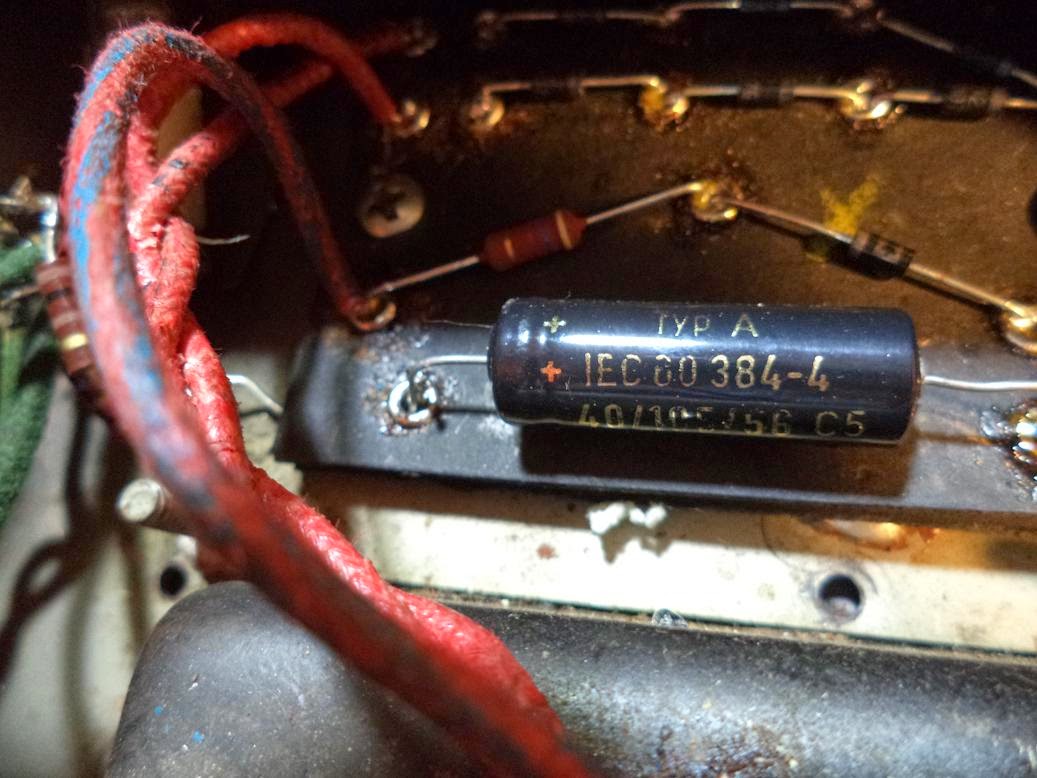Several years ago, I bought a Washburn WI-64 in transparent red. Although it is the most comfortable guitar I have ever held, and I love the design, I didn't like much else about it.
 |
| Almost new—all stock except the new knobs for the SG look |
The first thing I did was replace the knobs with SG style knobs. Then I stripped the paint, which took a very long time. This was before I had kids—I can't imagine spending that amount of time on a single guitar ever again. After coating it with some tung oil, I was glad I did it. It's a nice looking guitar. Except the headstock, which I will come to.
I replaced the stock pickups with GFS pickups (bleh on the pickups and GFS's customer service). After trying Dimarzio Super Distortions, I settled on Seymour Duncan Distortion pickups and loved those. I stayed with the original wiring for a while, but eventually replaced the pots and rewired the VCC setup as a traditional set up (two volume, two tone). I wanted a single coil option, so I put in a coil tap switch, which is wired to both pickups. I could have gone with push-pull pots, but I had the DPST switch on hand, and I am not a big fan of push-pull pots unless there is a reason that the guitar shouldn't be drilled.
 |
| After refinishing, still with the Dimarzio Super Distortions |
 |
| After adding the coil tap switch |
I did not do all of this at once. I poked away at it here and there over several months. When it was done, I loved it. It felt, played and sounded great. But the headstock always bugged me. Not so much the shape, which I could take or leave, but the cheap logo:
 |
| The original headstock |
These are $500 guitars new (I paid $350 for this one), but the logo design and quality always seemed more at home in the $200 and under category. I often wondered if I could peel off the template, but never had the guts to try until recently.
It ended up being a very quick job. I removed all of the hardware on the headstock and placed a scrap cloth on the face of the template. I accidentally used a rag with an iron-on on it, leaving gunk on the template, visible below. No harm done this time, fortunately.
I set the iron to cotton (hot) and ironed cloth, moving it slowly back and forth. I removed the iron and tried the edge with a scraper and was just able to get it under the template. I applied some more heat and was able to slide the scraper the rest of the way to the nut. Another NOTE: the template is wedged
under the nut just a little bit, so don't pry the template up. Rather, when you get the scraper most of the way to the nut, gently pull the template away from the nut, as parallel to the headstock as possible.
 |
| Applying heat to the cloth on the headstock face |
 |
| After enough heat was applied, I was able to get the scraper under the template |
The template is pretty sturdy. I wasn't sure if it would melt, but it did not at all. The only thing the iron did was warm up the glue underneath, enough to get the scraper under it.
I was relieved to see that there was no glue residue or any other gunk on the wood. It actually looked quite good even before sanding it. Here are the first few steps:
 |
| Before, hardware removed, template removed. |
I sanded it a bit, then coated it with the same tung oil I used on the rest of the guitar, and I think it looks great. In fact, having no cheap logo on it somehow makes the headstock shape a bit more pleasing to the eye. Here is the headstock with the hardware back in. The whole process took about 45 minutes, and considering the cheap look of the original logo, it was worth it.
 |
| Refinished headstock |




















































